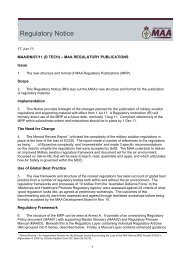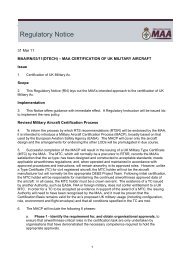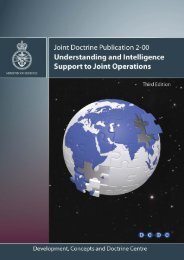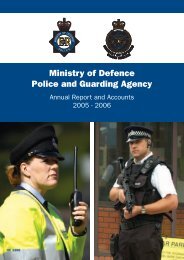3750 edition 6 PDF [263.5 KB] - Ministry of Defence
3750 edition 6 PDF [263.5 KB] - Ministry of Defence
3750 edition 6 PDF [263.5 KB] - Ministry of Defence
You also want an ePaper? Increase the reach of your titles
YUMPU automatically turns print PDFs into web optimized ePapers that Google loves.
AGREEMENT<br />
N° Reference/<br />
date <strong>of</strong> Amendment<br />
RECORD OF AMENDMENTS<br />
ii<br />
Date<br />
entered<br />
EXPLANATORY NOTES<br />
Signature<br />
1. This NATO Standardization Agreement (STANAG) is promulgated by the Director<br />
NATO Standardization Agency under the authority vested in him by the NATO<br />
Standardization Organisation Charter.<br />
2. No departure may be made from the agreement without informing the tasking<br />
authority in the form <strong>of</strong> a reservation. Nations may propose changes at any time to the<br />
tasking authority where they will be processed in the same manner as the original<br />
agreement.<br />
3. Ratifying nations have agreed that national orders, manuals and instructions<br />
implementing this STANAG will include a reference to the STANAG number for purposes<br />
<strong>of</strong> identification.<br />
RATIFICATION, IMPLEMENTATION AND RESERVATIONS<br />
4. Ratification, implementation and reservation details are available on request or<br />
through the NSA websites (internet http://nsa.nato.int; NATO Secure WAN<br />
http://nsa.hq.nato.int).<br />
FEEDBACK<br />
5. Any comments concerning this publication should be directed to NATO/NSA –<br />
Bvd Leopold III - 1110 Brussels - BEL.
Agreed English/French texts STANAG <strong>3750</strong><br />
(Edition 6)<br />
NATO STANDARDIZATION AGREEMENT<br />
STANAG<br />
REPORTING AND INVESTIGATION OF AIR TRAFFIC INCIDENTS<br />
Annexes: A Air Traffic Incident Report Form<br />
B National Offices for Investigation <strong>of</strong> Air Traffic Incidents<br />
Related Document: ICAO Publication PANS/RAC Doc 4444 - RAC/501/12<br />
AIM<br />
- 1 -<br />
NAVY/ARMY/AIR<br />
1. The aim <strong>of</strong> this agreement is to establish procedures for the reporting and<br />
investigation <strong>of</strong> air traffic incidents.<br />
AGREEMENT<br />
2. Participating nations agree that procedures for the reporting and investigation <strong>of</strong> air<br />
traffic incidents are as detailed herein.<br />
DEFINITIONS<br />
3. The following terms and definitions are used for the purpose <strong>of</strong> this agreement:<br />
a. "Air Traffic Incident" is used to mean a serious occurrence involving air traffic<br />
such as:<br />
(1) Aircraft Proximity (AIRPROX).<br />
(2) Serious difficulty caused by:<br />
(a) Faulty procedures or non-compliance with procedures<br />
(PROCEDURE), or<br />
(b) Failure <strong>of</strong> ground facilities (FACILITY).<br />
b. The definition <strong>of</strong> Aircraft Proximity (AIRPROX) is:<br />
"A situation in which, in the opinion <strong>of</strong> a pilot or air traffic services personnel,<br />
the distance between aircraft as well as their relative positions and speed<br />
have been such that the safety <strong>of</strong> the aircraft involved may have been<br />
compromised".
4. Air Traffic Incidents are designated and identified in reports by: AIRPROX,<br />
PROCEDURE and FACILITY.<br />
GENERAL<br />
5. The purpose <strong>of</strong> reporting and investigating air traffic incidents is to reduce the risk <strong>of</strong><br />
mid-air collisions and to reduce the risk <strong>of</strong> accidents/incidents caused by faulty<br />
procedures/non-compliance with procedures, or failure <strong>of</strong> ground facilities.<br />
6. Aircrew and Air Traffic Control (ATC)/Air <strong>Defence</strong> (AD) personnel who are involved<br />
in air traffic incidents, including those who have been reported as being involved, should<br />
co-operate in the investigation by providing complete and accurate information.<br />
USE OF THE AIR TRAFFIC INCIDENT REPORT FORM<br />
7. The Air Traffic Incident Report Form, is intended for use:<br />
a. By a pilot for filing a report on an air traffic incident after arrival or to conform<br />
a report made initially by radio during flight.<br />
b. By an ATS unit for recording an air traffic incident report received by radio,<br />
telephone or teleprinter.<br />
c. By an ATS unit for filing a report on an air traffic incident.<br />
REPORTING OF AIR TRAFFIC INCIDENTS BY PILOTS<br />
8. A pilot should proceed as follows regarding an incident in which he/she has been<br />
involved:<br />
a. During flight, use the appropriate air/ground frequency for submitting an initial<br />
report so as to permit the facts to be ascertained immediately.<br />
b. As promptly as possible after landing submit a completed Air Traffic Incident<br />
Report Form:<br />
(1) For confirming a report <strong>of</strong> an incident made initially as in "a." above, or<br />
for making the initial report on such an incident if it had not been<br />
possible to report it by radio.<br />
(2) For reporting an incident which did not require immediate notification<br />
at the time <strong>of</strong> occurrence.<br />
9. An initial report made by radio should contain the following information:<br />
a. Aircraft identification (own aircraft).<br />
b. Type <strong>of</strong> incident, e.g. AIRPROX.<br />
- 2 -
c. Date/time <strong>of</strong> incident (in Universal Time Constant (UTC)) and position.<br />
d. Own Aircraft. Heading and route. True air speed (measured in KT or KM/H).<br />
Level/altimeter setting (use FL, FT/QNH or QFE as appropriate), level flight,<br />
climbing or descending. Avoiding action taken (yes or no).<br />
e. Other Aircraft. Type and call sign/registration (if known). If not known<br />
describe the aircraft: high, mid or low wing or rotor aircraft. Engines: 1, 2, 3, 4<br />
or more than 4. Marking, colour or other available details. Heading (if<br />
known), controlling unit and frequency. Level: level flight, climbing,<br />
descending or unknown. Avoiding action taken: yes, no or unknown.<br />
f. Closest horizontal distance and closest vertical distance (state units used).<br />
g. Aerodrome <strong>of</strong> first landing and destination (own aircraft).<br />
10. A written report - in accordance with the Air Traffic Incident Report Form (Annex A)<br />
- shall be provided. Supplementary instructions for completion <strong>of</strong> the Report Form are as<br />
follows:<br />
ITEM:<br />
A Identification <strong>of</strong> the aircraft or the ATS unit filing the report.<br />
B An AIRPROX report should be filed immediately by radio.<br />
C1 Date/time UTC and position in bearing and distance from a navigation air or<br />
in LAT/LONG;<br />
C2 Information regarding aircraft filing the report, tick as necessary.<br />
C2 c) e.g. FL 350/1013 hPa or 2500 ft/QNH 1007 hPa or 1200 ft/QFE 998 hPa.<br />
C3 Information regarding the other aircraft involved.<br />
C4 Passing distance - state units used.<br />
C6 Attach additional papers as required. The diagrams may be used to show<br />
aircraft positions.<br />
D1 h) State name <strong>of</strong> ATS units and date/time in UTC.<br />
D1 i) Date and time in UTC.<br />
D2 d) Include telephone number <strong>of</strong> pilot, or operating authority, as appropriate, to<br />
facilitate enquiries by investigating authority.<br />
- 3 -
E2 Include details <strong>of</strong> ATS unit such as service provided, radiotelephony<br />
frequency, SSR Codes assigned and altimeter setting. Use diagram to show<br />
the aircraft position and attach additional papers as required.<br />
INVESTIGATION<br />
11. The nation in whose airspace the air traffic incident occurred shall be responsible<br />
for conducting the investigation <strong>of</strong> that incident. Aircrew and organizations involved in<br />
AIRPROX incidents shall ensure that their written AIRPROX reports are submitted to the<br />
responsible nation. The responsible nation shall prepare an investigation report which shall<br />
include, but is not limited to, the following information:<br />
a. Details <strong>of</strong> the AIRPROX incident.<br />
b. An assessment <strong>of</strong> the degree <strong>of</strong> risk <strong>of</strong> collision based on the following<br />
criteria:<br />
(1) Risk <strong>of</strong> Collision. The risk classification <strong>of</strong> an aircraft proximity in which<br />
serious risk <strong>of</strong> collision has existed.<br />
(2) Safety not assured. The risk classification <strong>of</strong> an aircraft proximity in<br />
which the safety <strong>of</strong> the aircraft may be have been compromised.<br />
(3) No Risk <strong>of</strong> Collision. The risk classification <strong>of</strong> an aircraft proximity in<br />
which no risk <strong>of</strong> collision has existed.<br />
(4) Risk not determined. The risk classification <strong>of</strong> an aircraft proximity in<br />
which insufficient information was available to determine the risk<br />
involved, or inconclusive or conflicting evidence precluded such<br />
determination.<br />
c. The measures that have been or will be taken to prevent recurrence <strong>of</strong> this<br />
type <strong>of</strong> AIRPROX incident.<br />
12. The investigation report shall be dispatched in accordance with Annex B to the<br />
nations whose crew and organizations were involved in the incident.<br />
IMPLEMENTATION OF THE AGREEMENT<br />
13. This STANAG is implemented when a nation has issued the necessary<br />
order/instructions to the forces concerned putting the procedures detailed in this<br />
agreement into effect.<br />
- 4 -
A - 1<br />
ANNEX A to<br />
STANAG <strong>3750</strong><br />
(Edition 6)<br />
AIR TRAFFIC INCIDENT REPORT FORM<br />
For use when submitting and receiving reports on air traffic incidents. In an initial report by radio, shaded items<br />
should be included.<br />
A - AIRCRAFT IDENTIFICATION<br />
B - TYPE OF INCIDENT<br />
C - THE INCIDENT<br />
1. General<br />
AIRPROX / PROCEDURE / FACILITY<br />
a) Date/time <strong>of</strong> incident __________________________________________________ UTC<br />
b) Position _________________________________________________________________<br />
2. Own aircraft<br />
a) Heading and route ________________________________________________________<br />
b) True airspeed ______________________ measured in ( ) kt ___ ( ) km/h ______<br />
c) Level and altimeter setting _________________________________________________<br />
d) Aircraft climbing or descending<br />
( ) Level flight ( ) Climbing ( ) Descending<br />
e) Aircraft bank angle<br />
( ) Wings level ( ) Slight bank ( ) Moderate bank<br />
( ) Steep bank ( ) Inverted ( ) Unknown<br />
f) Aircraft direction <strong>of</strong> bank<br />
( ) Left ( ) Right ( ) Unknown<br />
g) Restriction to visibility (select as many as required)<br />
( ) Sunglare ( ) Windscreen pillar ( ) Dirty windscreen<br />
( ) Other cockpit structure ( ) None<br />
h) Use <strong>of</strong> aircraft lighting (select as many as required)<br />
( ) Navigation lights ( ) Strobe lights ( ) Cabin lights<br />
( ) Red anti-collision lights ( ) Landing / taxi lights ( ) Logo (tail fin) lights<br />
( ) Other ( ) None<br />
i) Traffic avoidance advice issued by ATS<br />
( ) Yes, based on radar ( ) Yes, based on visual sighting ( ) Yes, based on other<br />
information<br />
( ) No<br />
j) Traffic information issued<br />
( ) Yes, based on radar ( ) Yes, based on visual sighting ( ) Yes, based on other<br />
information<br />
( ) No<br />
k) Airborne collision avoidance system - ACAS<br />
(…..) Not carried ( ) Type ( ) Traffic advisory issued<br />
(…..) Resolution advisory ( ) Traffic advisory or resolution<br />
issued advisory not issued<br />
l) Radar identification<br />
( ) No radar available ( ) Radar identification ( ) No radar identification<br />
m) Other aircraft sighted<br />
( ) Yes ( ) No ( ) Wrong aircraft sighted<br />
n) Avoiding action taken<br />
( ) Yes ( ) No<br />
o) Type <strong>of</strong> flight plan IFR / VFR / none*
3. Other aircraft<br />
a) Type and call sign / registration (if known) ___________________________________________<br />
b) If a) above not known, describe below<br />
( ) High wing (…..) Mid wing ( ) Low wing<br />
( ) Rotorcraft<br />
( ) 1 engine ( ) 2 engines ( ) 3 engines<br />
( ) 4 engines ( ) More than 4 engines<br />
Marking, colour or other available details<br />
_____________________________________________________________________________________<br />
_____________________________________________________________________________________<br />
_____________________________________________________________________________________<br />
_____________________________________________________________________________________<br />
c) Aircraft climbing or descending<br />
( ) Level flight ( ) Climbing ( ) Descending<br />
( ) Unknown<br />
d) Aircraft bank angle<br />
( ) Wings level ( ) Slight bank ( ) Moderate bank<br />
( ) Steep bank ( ) Inverted ( ) Unknown<br />
e) Aircraft direction <strong>of</strong> bank<br />
( ) Left ( ) Right ( ) Unknown<br />
f) Lights displayed<br />
( ) Navigation lights ( ) Strobe lights ( ) Cabin lights<br />
( ) Red anti-collision lights ( ) Landing/taxi lights ( ) Logo (tail tin) lights<br />
( ) Other ( ) None ( ) Unknown<br />
g) Traffic avoidance advice issued by ATS<br />
( ) Yes, based on radar ( ) Yes, based on visual sighting ( ) Yes, based on other<br />
information<br />
( ) No ( ) Unknown<br />
h) Traffic information issued<br />
( ) Yes, based on radar ( ) Yes, based on visual sighting ( ) Yes, based on other<br />
information<br />
( ) No ( ) Unknown<br />
i) Avoiding action taken<br />
( ) Yes ( ) No ( ) Unknown<br />
4. Distance<br />
a) Closest horizontal distance _______________________________________________________<br />
b) Closest vertical distance __________________________________________________________<br />
5. Flight weather conditions<br />
a) IMC / VMC *<br />
b) Above / below* clouds / fog / haze or between layers*<br />
c) Distance vertically from cloud ___________ m / ft* below __________ m / ft* above<br />
d) In cloud / rain / snow / sleet / fog / haze*<br />
e) Flying into / out <strong>of</strong>* sun<br />
f) Flight visibility _____ m / km*<br />
6. Any other information considered important by the pilot-in-command<br />
____________________________________________________________________________________<br />
____________________________________________________________________________________<br />
____________________________________________________________________________________<br />
____________________________________________________________________________________<br />
____________________________________________________________________________________<br />
* Delete as appropriate<br />
A - 2
D - MISCELLANEIOUS<br />
1. Information regarding reporting aircraft<br />
a) Aircraft registration ______________________________________________________________<br />
b) Aircraft type ____________________________________________________________________<br />
c) Operator _______________________________________________________________________<br />
d) Aerodrome <strong>of</strong> departure __________________________________________________________<br />
e) Aerodrome <strong>of</strong> first landing _____________________ destination ________________________<br />
f) Type <strong>of</strong> air traffic service _______________________ #<br />
g) RT frequency ________________ SSR code ___________________ #<br />
h) Reported by radio or other means to _____________ (name <strong>of</strong> ATS uniti) at time _________UTC<br />
i) Date / time / place <strong>of</strong> completion <strong>of</strong> form _______________________________________________<br />
2. Function, address and signature <strong>of</strong> person submitting report<br />
a) Function _________________________________________________________________________<br />
b) Address _________________________________________________________________________<br />
c) Signature ________________________________________________________________________<br />
d) Telephone number ________________________________________________________________<br />
3. Function and signature <strong>of</strong> person receiving report<br />
a) Function ________________________ b) Signature _____________________________________<br />
E. SUPPLEMENTARY INFORMATION BY ATS UNIT CONCERNED<br />
1. Receipt <strong>of</strong> report<br />
a) Report received via AFTN / radio / telephone / other (specify)* ____________________________<br />
b) Report received by _______________________________ (name <strong>of</strong> ATS unit)<br />
# Addition to the ICAO form.<br />
A - 3
2. Details <strong>of</strong> ATS action<br />
Clearance, incident seen (radar/visually, warning given, result <strong>of</strong> local enquiry, etc.)<br />
_____________________________________________________________________________________<br />
_____________________________________________________________________________________<br />
_____________________________________________________________________________________<br />
_____________________________________________________________________________________<br />
DIAGRAMS OF AIRPROX<br />
Mark passage <strong>of</strong> other aircraft relative to you, in plan on the left and in elevation on the right, assuming YOU are at<br />
the centre <strong>of</strong> each diagram. Include first sighting and passing distance.<br />
A - 4
B - 1<br />
ANNEX B to<br />
STANAG <strong>3750</strong><br />
(Edition 6)<br />
NATIONAL OFFICES FOR INVESTIGATION OF AIR TRAFFIC INCIDENTS/<br />
BUREAUX NATIONAUX DES ENQUÊTES SUR LES INCIDENTS DE CIRCULATION<br />
AÉRIENNE<br />
BE Belgian Air Staff<br />
VS3/Ctl-Met.<br />
Quartier Reine Elisabeth<br />
Rue d'Evere<br />
B-1140 BRUXELLES Tel: (32) 2 701-4944<br />
Belgium Fax: (32) 2 701-6647<br />
Régie des Voies Aériennes<br />
Centre de communication Nord<br />
Attn: SV/ATS<br />
Rue du Progrès, 80, B5<br />
B-1030 BRUXELLES Tel: (32) 2 212-2111<br />
Belgium Fax: (32) 2 212-2288<br />
CA National <strong>Defence</strong> Headquarters<br />
Directorate <strong>of</strong> Flight Safety<br />
Flight Safety Services - DFS 3<br />
Major-General George R. Peakes Building Tel: (613) 992-0154<br />
OTTAWA, ON Fax: (613) 992-5187<br />
Canada KIA 0K2 e-mail:<br />
maj.d.mercier@debbs.ndhq.dnd.ca<br />
Transportation Safety Board <strong>of</strong> Canada<br />
Place du Centre<br />
200, Promenade du Portage 4 th floor Tel: (819) 994-4252<br />
HULL, QC Fax: (819) 953-9586<br />
Canada KIA 1<strong>KB</strong> e-mail: airops@tsb.gc.ca<br />
DA Headquarters Tactical Air Command<br />
Tel: (45) 9710 1550, ext. 5135<br />
Attn: Flight Safety Branch Fax: (45) 9962 4955<br />
DK-7470 KARUP J e-mail: fs@ftk.dk<br />
Denmark Msg: TACDEN KARUP DE, RDFEA
Department <strong>of</strong> Accident Investigation<br />
Civil Aviation Tel: (45) 38 711066<br />
Jernbaneallé 45 Fax: (45) 38 719231<br />
DK-2720 VANLOESE Telex: 16850/AAIBDK<br />
Denmark AFTN: EKCHYLYX<br />
FR Direction de la Circulation Aérienne<br />
Militaire<br />
Base Aérienne 921 Tel: (33) 39 899010<br />
Attn: Bureau Incidents ext. 3039<br />
95155 TAVERNY CEDEX Fax: (33) 39 895512<br />
France Attn: DIRCAM<br />
Direction de la Navigation Aérienne<br />
143 rue Blomet<br />
70015 PARIS Tel: (33) 1 4045 8700<br />
France Fax: (33) 1 4856 2313<br />
GE German Air Force Office<br />
Attn: Mil Flt Ops<br />
Postfach 906110<br />
D-51127 KÖLN Tel: (49) 2203 602-4559/3004<br />
Germany Fax: (49) 2203 602-2776<br />
DFS Deutsche Flugsicherung<br />
GmbH-FCQ<br />
Postfach 100551<br />
D-63005 OFFENBACH/MAIN Tel: (49) 69 8054 1420/1422<br />
Germany Fax: (49) 69 8054 1495<br />
GR Hellenic Air Force General Staff<br />
Attn: HAF/A3/2 or HAF/FSD<br />
Stratopedon Papagou<br />
HOLARGOS - ATHENS Tel: (30) 1 644-1645<br />
Greece - 15561 Fax: (30) 1 642-7823<br />
B - 2
HU Military Aviation Authority<br />
Tel: (36) 1 332 0922<br />
<strong>Ministry</strong> <strong>of</strong> <strong>Defence</strong> (MAA MOD) Fax: (36) 1 312 7093<br />
Hüvösvölgyi Street 21-23 Msg: 1885 BUDAPEST POBox 25<br />
1026 BUDAPEST II HUNGARY<br />
Hungary e-mail: hmklh@hm.gov.hu<br />
IT Comando Squadra Aerea<br />
Brigata Spatio Aereo<br />
Aeroporto Centocelle Tel: (39) 06-2429 2828<br />
00100 ROMA Fax: (39) 06-2429 2893<br />
Italy Telex: BRIGAEROSPATIO ROMA<br />
Ente Nazionale Assistenza al Volo<br />
Traffico Aereo Generale<br />
Attn: Sicurezza Volo<br />
Via Salaria, 716 Tel: (39) 06-8166 566<br />
I-00138 ROMA Fax: (39) 06-8166 473<br />
Italy Telex: ENAV ROMA<br />
NL Royal Netherlands Air Force<br />
Directorate <strong>of</strong> Operations<br />
Support Operations Division<br />
P.O. Box 20703<br />
2500 ES THE HAGUE Tel: (31) 70 339 6282<br />
The Netherlands Fax: (31) 70 339 6373<br />
Royal Netherlands Navy<br />
Naval Staff Department <strong>of</strong> Naval Aviation<br />
P.O. Box 20702<br />
2500 ES THE HAGUE Tel: (31) 70 316 2123<br />
The Netherlands Fax: (31) 70 316 2276<br />
Department <strong>of</strong> Civil Aviation<br />
Secretary ATIC<br />
Postbox 575<br />
2130 AN HOOFDDORP Tel: (31) 23 566 3131<br />
The Netherlands Fax: (31) 23 562 3236<br />
B - 3
NO Headquarters <strong>Defence</strong> Command Norway<br />
Attn: Inspector <strong>of</strong> Flight Safety<br />
FKI/KOLSÅS<br />
Oslo Mil/HUSEBY Tel: (47) 2309 8797<br />
N-0016 OSLO 1 Fax: (47) 2309 7987<br />
Norway Msg: CHOD NO//FTINSP//<br />
Directorate <strong>of</strong> Civil Aviation<br />
Attn: Air Navigation Tel: (47) 2294 2000<br />
PO Box 8124 DEP Fax: (47) 2294 2390<br />
N-0032 OSLO Msg: Norwegian Civil<br />
Norway Aviation Authorities (LV)<br />
PO Comando Operacional da Forca Aéra<br />
Tel: (351) 21 771 6063<br />
Centro de Gestão de Tráfego Aéreo Fax: (351) 21 771 6047<br />
Avenida Terente Martins Msg: NATO: TRAFAEROFAP<br />
1500-589 LISBOA Mdg: ICAO: LPAMYOYX<br />
Portugal Telex: 12861 CCOMFAP<br />
INAC - Instituto Nacional da Aviação Civil<br />
Rua B, Edificios 4, 5 e 6 Tel: (351) 21 842 3500<br />
Aeroporto de Lisboa Fax: (351) 21 840 2398<br />
1749-034 LISBOA Msg: ICAO: LPPTYLYV<br />
Portugal Telex: 12120 AERVIC-P<br />
SP Estado Mayor del Aire<br />
División de Operaciones<br />
Attn: Sección de Espacio Aéreo<br />
Romero Robledo, 8<br />
28008 MADRID Tel: (34) 91 549 0700, ext. 2330<br />
Spain Fax: (34) 91 544 5472<br />
Dirección General de Aviación Civil<br />
Comisión de Invistigación de Incidentes Tel: (34) 1 597 6259<br />
Plaza San Juan de la Cruz, s/n (34) 1 597 6260<br />
28071 MADRID Fax: (34) 1 597 6283<br />
Spain AFTN: LEACZXTN<br />
B - 4
TU Genelkurmay Anlaşmalar<br />
Daire Bşk. liği<br />
Attn: And. D. MAS Ş.<br />
06100 ANKARA Tel: 00-90-312 4021425<br />
Turkey Fax: 00-90-312 4250813<br />
UK UK AIRPROX Board<br />
Hillingdon House<br />
Uxbridge<br />
MIDDLESEX UB 10 0RU Tel: (44) 1 895 276121<br />
United Kingdom Fax: (44) 1 895 276124<br />
US HQ AFSC/SEPP<br />
9700 Avenue G SE, Suite 215<br />
KIRTLAND AFB, NM 87117, Tel: (1) 505 846-1162<br />
USA Fax: (1) 505 846-1391<br />
Federal Aviation Administration<br />
800 Independence Ave SW<br />
Attn: AFS-20 (Room 1000E) Tel: (1) 202 267-7419<br />
WASHINGTON DC 20591, USA Fax: (1) 202 267-5178<br />
B - 5


![3750 edition 6 PDF [263.5 KB] - Ministry of Defence](https://img.yumpu.com/5901071/1/500x640/3750-edition-6-pdf-2635-kb-ministry-of-defence.jpg)
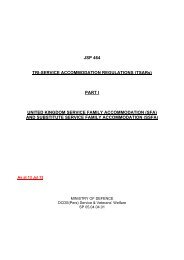
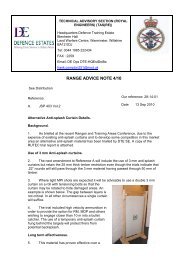
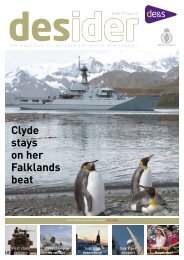
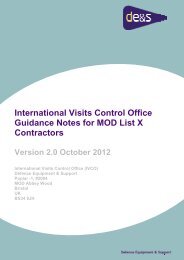

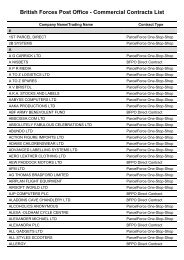

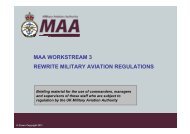

![MAA Regulatory Publications - FAQs PDF [37.3 KB]](https://img.yumpu.com/5906104/1/184x260/maa-regulatory-publications-faqs-pdf-373-kb.jpg?quality=85)
